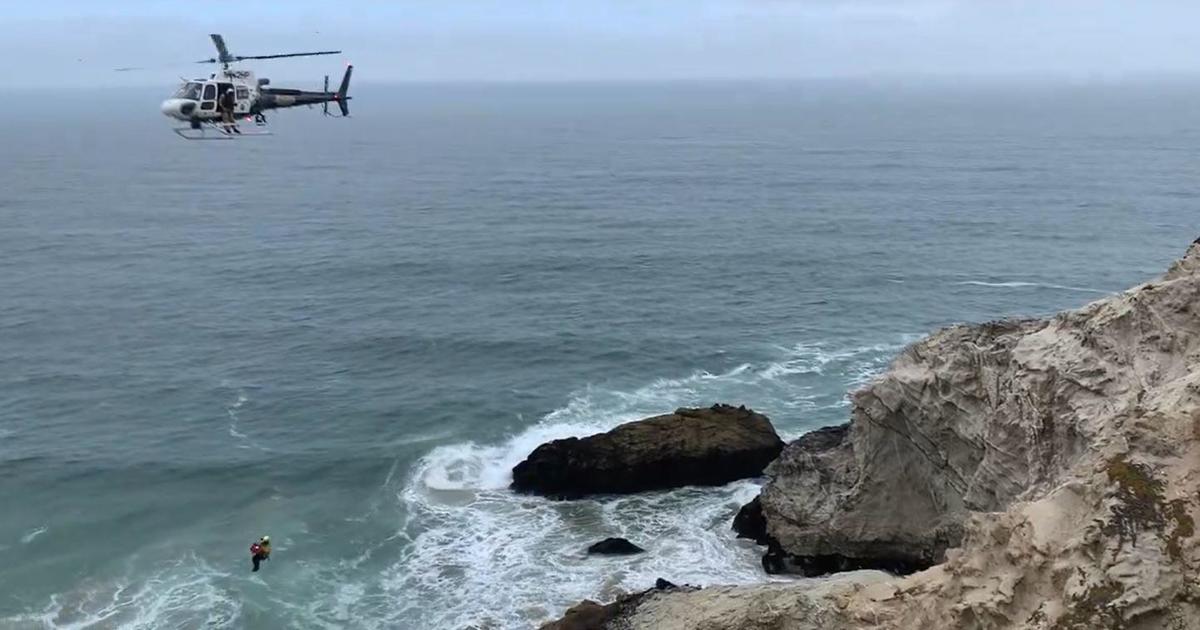High-Tech 'Saildrones' To Help Predict El Niño, Collect Climate Data
SAN FRANCISCO (KPIX 5) -- Imagine being able to accurately predict extreme weather events such as hurricanes Harvey and Irma months in advance to better prepare those in their paths.
Recently in San Francisco Bay, KPIX 5 caught a glimpse of such a future: a boat pulling two high-tech "saildrones" out to the Pacific.
The journey began on the Alameda waterfront, at the historic former Naval Air Station Alameda.
A huge forklift device carefully drove each one of the brightly-colored drones from inside a cavernous warehouse, to carefully place them one-by-one into the water.
"Today is a very important day for us and for oceanographic science in general," said Sebastien de Halleux, Chief Operating Officer at Saildrone, Inc.
"Yes, we're very excited," exclaimed Dr. Christopher Sabine, Laboratory Director at the National Oceanic and Atmospheric Administration's Pacific Marine Environmental Lab based in Seattle, Washington.
The saildrones' mission: a six-month, 8,000 nautical mile round-trip journey to the equator, where they will encounter the birth place of the weather phenomenon known as El Niño.
"Those start in the tropical Pacific but it's a very remote location, it's difficult to monitor," explained Sabine.
The ultimate goal of this launch and journey: To help scientists better understand not only El Niño, but the world's changing climate,
Onboard, not a single human being. Instead, the drones are each equipped with an amazing array of sensors.
"Wind measurement, you have temperature, humidity, skin surface temperature, you've got wave height and period, you've got CO2 exchange between the weather and the water," said de Halleux.
This project is a collaboration between NOAA and Saildrone, a 26-person startup based in Alameda. The company's drones are guided by GPS, and controlled by remote rudder. Once on their journey, they are not propelled by fossil fuel; they use wind and solar power, and are built to last.
"They're designed to survive storms, to survive icy conditions, to survive long periods at sea which have never been done before." explained de Halleux.
For NOAA scientists, teaming up with Saildrone made a lot of sense. The Pacific Marine Lab is focused on making measurements to help the U.S. improve weather forecasting and predictions.
El Niño events start in the tropical Pacific but the location is very remote. Since the 1980s, NOAA has deployed moored buoys in the Pacific Ocean which collect wind, wave, and other marine data.
But to maintain the buoys, NOAA deploys large ships to service them - an expensive and dangerous job, said Sabine. These saildrones will augment data collection and may one day replace the buoys.
Instead of a moored, fixed buoy point, Sabine said the routes of these saildrones are flexible and fluid. "These things send back information in real time so if we see particular features, we say, 'Why don't you stay there?' We can't do that with moorings," said Sabine.
The scientists have decades of observations, knowledge and research regarding our oceans and climate. Saildrone provides a unique way to validate and update measurements, as well as provide nimble flexibility in collecting data
"Moving to a platform like this is a whole paradigm change of the opportunities and the things we can do that we haven't really envisioned before," said Sabine.
Last year, NOAA and Saildrone deployed several drones into the Arctic Ocean and the Bering Sea. An onboard camera caught a young seal hitchhiking a ride. It goes to show that perhaps the most exciting drones aren't in the sky, but in the oceans.



